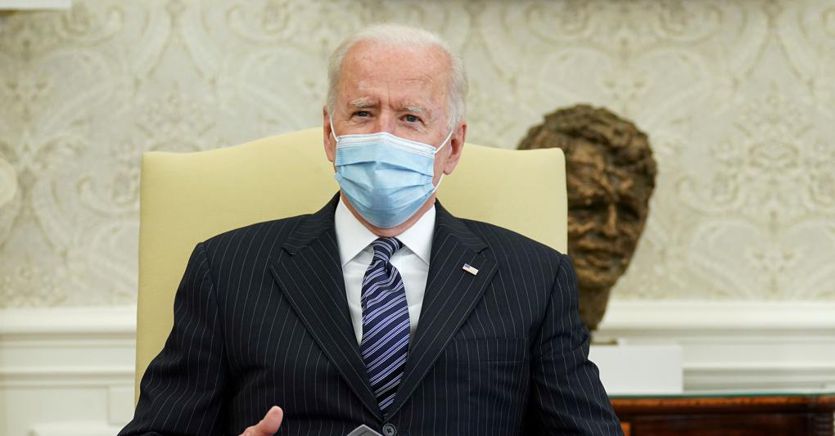“An investment in our children, in families, in the future. To “create an economy that leaves no one behind”. Joe Biden has raised the curtain on the last major pillar of his reforms: a $ 1.8 trillion plan to support middle and disadvantaged classes. Which explicitly targets social and racial inequalities, paid for with tax increases on the wealthiest. And that raises public resources destined to rebuild post-pandemic America, under the banner of Build Back Better, to 4,100 billion, added to the 2,300 billion proposed for infrastructure, environment and employment.
Speech to Congress after 100 days in the White House
This drawing will be the soul of his first speech, this evening, before the Congress in assembled chambers. His new and more dramatic promise to the country at the 100-day milestone in the White House. In addition to his speech on Capitol Hill, Biden outlined the American Families Plan project in a dense 15-page document that he hopes will become law passed by Parliament, even at the cost of forcing his hand with procedural maneuvers, giving up bipartisan efforts and leverage only the fragile democratic majority against a unanimous republican opposition.
Loading…
L’American Families Plan in 15 pagine
The 15 pages begin immediately with two big figures: one thousand billion of expenditure and 800 of tax reliefs and credits. With an emphasis on education, health and childcare, paid work permits, anti-poverty aid. The concentration of tax increases on 1% of Americans with incomes over $ 400,000 a year is also significant: it will bring a dowry of 1,500 billion in ten years and will fully cover investments in 15 years. Large numbers already stirring up the Republican rebellion against excessive government expansion: their response to Biden’s speech was prepared to be high-profile, entrusted to the party’s only African-American senator Tim Scott.
Ambitious reforms
The details of the Biden plan go even further, putting pen to paper a complex range of programs that do not hide transformative ambitions, the revival and enlargement of the middle classes that are too often impoverished or torn by inequalities and discrimination. The President called for “courageous actions” needed in times of crisis. More aggressive, due to the hypothesized redistributive and progressive effects, than those of his more recent Democratic predecessors in the Oval Office, Barack Obama and Bill Clinton. On the tax front the highest individual rate will return to 39.6% from 37% to which the Republicans had reduced it in 2017. A percentage that would be paid, without concessions, even on capital gains and dividends by those who earn over a million a year, 0.3% of the population. “Discounts” on the incomes of kings of hedge funds will be canceled. Changes in inheritance taxes will raise burdens on capital gains on inherited assets. And checks will be triggered on the wealthiest taxpayers: the White House is convinced that they hide up to a fifth of income and intends to rake in 700 billion in ten years.
Education expenditure in evidence
But it is expenses and reliefs for the less well-off that make up the lion’s share of the Biden plan. In all, access to the education sector reaches over 500 billion, with four, unprecedented years of school and university free for all: two of pre-kindergarten (209 billion) and two of community colleges (109 billion), which can prelude a four-year degree. An additional 200 billion are triggered in subsidies for needy students, from African American universities and for the qualification and hiring of teachers. More childcare, $ 225 billion, will be targeted at families with wages up to one and a half times the median income in each state, so that no one spends more than 7% of what they earn on such services. These shortages would cost the US economy 57 billion a year.
